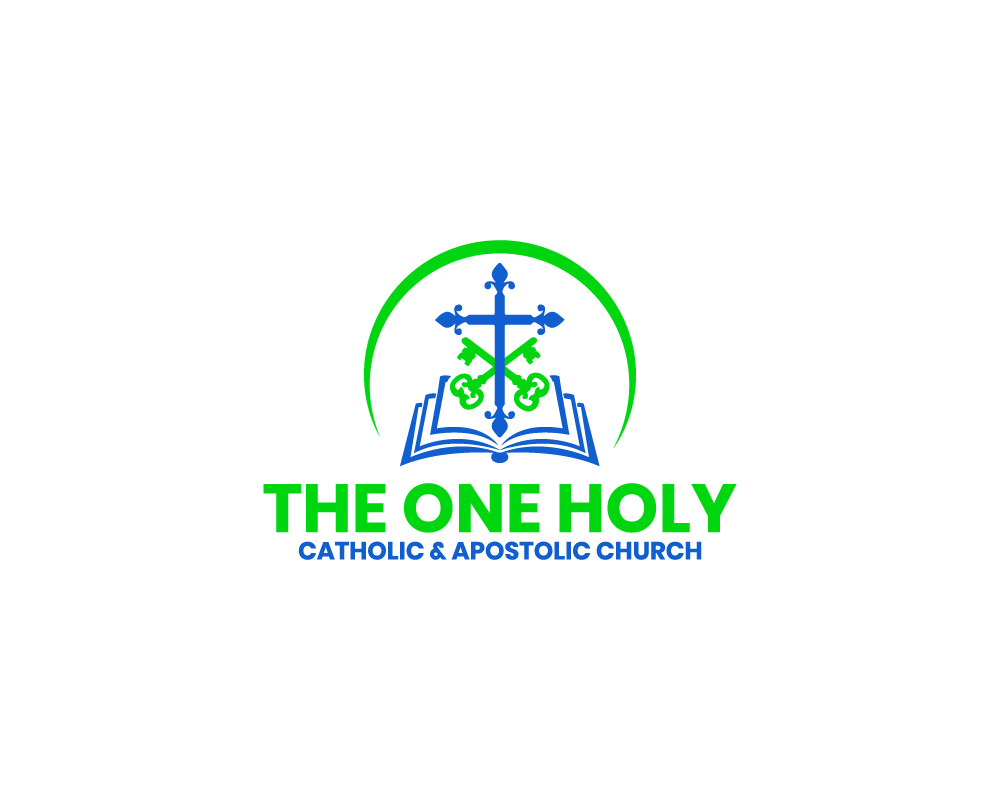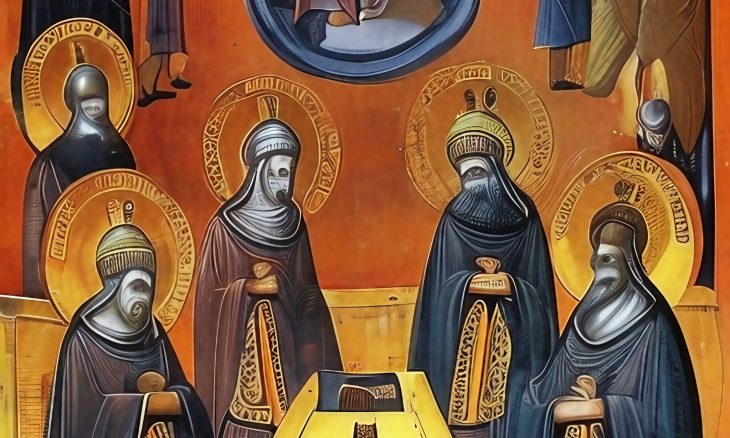A Historical Overview
The One Holy Catholic and Apostolic Church have faithfully preserved the teachings of the Second Council of Constantinople (553 AD), an essential milestone in the history of Christianity. This council reaffirmed the doctrines established by previous councils and set a strong foundation for the Orthodox faith.
The Significance of the Council
Emperor Justinian, I convened the Second Council of Constantinople to address the lingering controversies surrounding Christological doctrines, particularly the heresies that had been condemned in the Council of Chalcedon (451 AD). It sought to bring unity and theological clarity to the Church.
The council focused on condemning the “Three Chapters,” a collection of writings by Theodore of Mopsuestia, Theodoret of Cyrrhus, and Ibas of Edessa. These writings were deemed sympathetic to the Nestorian heresy, which claimed that Jesus Christ had two distinct persons, one divine and one human.
St. Cyril of Alexandria: A Pillar of Orthodoxy
St. Cyril of Alexandria, a key figure in the development of Christological doctrine, once wrote, “For we do not say that the nature of the Word was changed and became flesh, nor that He was converted into a whole man made up of soul and body; but rather that the Word, having personally united to Himself flesh animated by a rational soul, inexplicably and incomprehensibly became man” (St. Cyril of Alexandria, Letter 4).
The teachings of St. Cyril greatly influenced the decisions of the Second Council of Constantinople, which upheld the Orthodox understanding of the Incarnation and the unity of Christ’s personhood.
Church Unity and the Council’s Aftermath
Though the Second Council of Constantinople successfully reaffirmed the Christological doctrines, it faced opposition from various factions within the Church. Nevertheless, the council’s decisions were ultimately accepted and integrated into the teachings of the One Holy Catholic and Apostolic Church.
The Ongoing Relevance of the Second Council
Today, the Second Council of Constantinople continues to hold significance for the Orthodox faith. It serves as a reminder of the importance of adhering to the actual teachings handed down by the apostles and the early Church Fathers.
As St. Irenaeus of Lyons said, “The Church, having received this preaching and this faith, although scattered throughout the whole world, yet, as if occupying one house, carefully preserves it” (Against Heresies, Book 1, Chapter 10).
Join Us in Upholding the Faith
We invite you to join us in upholding the rich theological heritage of the One Holy Catholic and Apostolic Church as we continue to embrace the teachings of the Second Council of Constantinople and the wisdom of the Church Fathers.
Participate in our liturgical services, educational programs, and community events to deepen your understanding of our faith and grow closer to God.
Connect with Our Community
Explore our website to learn more about our history, mission, and ministries. You’ll find resources, articles, and videos illuminating the teachings of the Second Council of Constantinople and the Orthodox faith.
We also encourage you to connect with us on social media, where you can engage in meaningful discussions and share your faith journey with fellow believers.
The Dogmas
The Fifth Ecumenical Council, also known as the Second Council of Constantinople, was held in 553 AD. The council primarily aimed to address and resolve the lingering theological controversies surrounding the person of Christ and to reaffirm the decisions made by the previous councils, notably the Council of Chalcedon.
While there isn’t a single “word-for-word” document that lists all the doctrines established by the Fifth Ecumenical Council, the primary outcome was the condemnation of the “Three Chapters” – writings attributed to Theodore of Mopsuestia, Theodoret of Cyrrhus, and Ibas of Edessa. These writings were believed to be sympathetic to Nestorianism, a heresy that the Council of Ephesus had already condemned in 431 AD.
The council produced 14 anathemas, which were statements of condemnation against specific heresies and the individuals associated with them. Some of these anathemas explicitly address the teachings of the Three Chapters. The anathemas are not direct statements of doctrine but rather reinforce existing doctrines established in previous councils.
For a comprehensive understanding of the doctrines and outcomes of the Fifth Ecumenical Council, it is essential to study the proceedings, documents, and historical context of the council. Reading the acts of the council and the anathemas will provide further insight into the decisions and the theological controversies addressed.
The Anathemas
Here are the 14 anathemas issued by the Fifth Ecumenical Council:
- If anyone does not confess that Emmanuel is truly God and that therefore the Holy Virgin is the Mother of God, inasmuch as in the flesh she bore the Word of God made flesh, let him be anathema.
- If anyone does not confess that the Word of God the Father was united hypostatically with the flesh, and that consequently Christ is one with his own flesh, but at the same time is God, let him be anathema.
- If anyone says that Christ is a mere man who has been adopted by God, so that he became the Son of God, not by nature, but by adoption, as if God had taken him into a special relationship of favour, let him be anathema.
- If anyone says that the union of the Word of God with the flesh was made by a mere conjunction of a Divine Person with a human person, let him be anathema.
- If anyone says that the Divine Word was united with the man only according to grace or energy or dignity, or as a prophet or as an apparition, and does not rather confess that he was united hypostatically, and that the two natures have been united in one person, let him be anathema.
- If anyone divides the hypostases of the one Christ after the union, connecting them only by a conjunction in terms of honour or dignity, or power, or activity, and not rather by a union according to subsistence, let him be anathema.
- If anyone says that Christ was twofold, as a man and as the Son of God, and does not rather confess that he is one, because the Word became flesh and the flesh became the Word and one of the same Christ and Son, not merely in terms of dignity and authority, but also in reality, let him be anathema.
- If anyone, in speaking of the divine-human activity (energeia) of Christ, speaks of only one nature, or substance, force, or activity, and thus fails to recognize, as the holy Fathers have taught, that it is the activity of both natures, and their natural conjunction, let him be anathema.
- If anyone does not confess that our Lord Jesus Christ who was crucified in the flesh is true God and the Lord of Glory, and one of the Holy Trinity, let him be anathema.
- If anyone says that the crucifixion was a mere show, and not a real one, and thus denies the salvation of the world, let him be anathema.
- If anyone says that the Resurrection of our Lord is a fiction, and not a reality, and thus denies the resurrection of the dead, let him be anathema.
- If anyone says that God the Word, the unchangeable Son of God, was changed into the flesh, or into any sort of human composition, and did not rather take flesh of the holy Virgin and become man, let him be anathema.
- If anyone dares to say that the man who was assumed ought to have been worshipped and glorified together with the Divine Word, and be called God along with him, while being distinct from him, (for the addition of “with him” demands this interpretation); and does not rather honor the one Emmanuel with one veneration and worship even as he himself said, “Worship Him, who shall come to be,” let him be anathema.
- If anyone does not confess that the Logos [Word] from God the Father has been united by hypostasis with flesh, and is one Christ with his own
The Fifth Ecumenical Council
Excerpt From The Rudder
“The Holy and Ecumenical Fifth Council (which was the second one held in Constantinople) was held in the year 553 in the reign of Emperor Justinian I. According to Dositheus (Book V, ch. 16 of the Dodecabiblus), its proceedings and transactions were contained in eight Acts written in Latin, and, according to the Collection of the Councils (p. 261 of vol. ii), in five written in Greek. It was attended by Fathers to the number of 165, among whom Menas shone with the greatest splendor at first, and afterwards in succession Eutychius, both of them having served as Patriarchs of Constantinople; followed by Vigilius, the Bishop of Rome, who, though at the time in Constantinople, was not actually present at the Council itself either in person or by proxies (as, for instance, was done at the Second Ecumenical Council), but who nevertheless sanctioned the Council later in a written publication; Apolinarius of Alexandria, Domnus of Antioch, Didymus and Evagrius, these two taking the place of and representing Eustochius of Jerusalem. The Council anathematized the written works of Diodorus of Tarsoupolis (or Tarsus) and those of Theodore of Mopsuestia, and indeed even Theodore himself, and Diodorus, according to Photius, Code 18, and the respective Act of the Seventh Ec. C. See also p. 14 in the first volume of the Series concerning the Reporters, who, holding the tenets of Nestorius, left these records in writing upon their death (especially Theodore of Mopsuestia, who served as the teacher of Nestorius and declared the Logos to be a different God than the one called Christ, who was troubled by the passions of the soul and by the desires of the flesh). It also anathematized what had been written by blissful Theodoret against the twelve “heads” (or “chapters”) of St. Cyril (of Alexandria), and the so-called letter of Ibas, the Bishop of Edessa, to Mares the Persian. It further anathematized even Origen himself, and Didymus, and Evagrius, and their detestable tenets, who foolishly affirmed that souls were existent prior to bodies, and that upon the death of one body they enter another; that there is an end to the punishment suffered in hell; that demons are going to recover the original dignity of angelic grace which they used to have; that souls are going to be resurrected naked without a body; and that the heavenly bodies have souls; and still other cacodoxical notions. It also anathematized Anthimus of Trebizond for entertaining the ungodly beliefs of Eutyches, and also Severus, and Peter the Bishop of Apameia, and Zooras. But this Council did not promulgate any Canons relating to the ecclesiastical constitution, but only fourteen anathematisms against the said heretics and others, and twenty-five more directed solely against the Origenists (p. 341 of the second volume of the Councils).”
Cummings, D. with Agapios, Orthodox Eastern Church, and Nicodemus. The Rudder. Trans. D. Cummings. Chicago, IL: Orthodox Christian Educational Society, 1957. Print.



